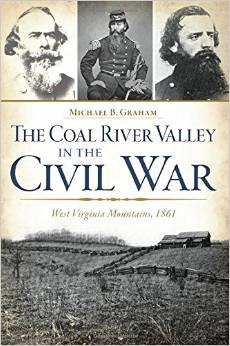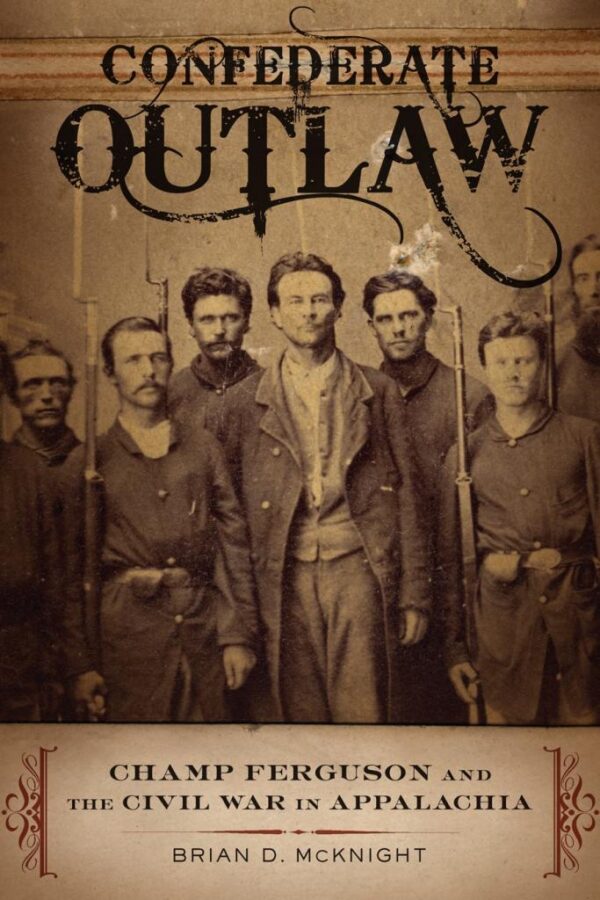The Coal River Valley in the Civil War: West Virginia Mountains, 1861 by Michael B. Graham. The History Press, 2014. Paper, ISBN: 978-1626196605. $19.99.
 The History Press, publisher of Michael B. Graham’s The Coal River Valley in the Civil War, aims to “[preserve] and [enrich] community by empowering history enthusiasts to write local stories for local audiences.” As a detailed look at a series of four engagements in the mountains of southwestern West Virginia in the fall of 1861, Graham’s strictly military history fulfills this mission, but it will leave some scholars of the Civil War wanting for analysis and engagement with historiography. Thus, it will appeal more to local people, genealogists, and military buffs than to scholars. Nevertheless, it is a compelling story that helps fill a gap, however small, in Civil War military history.
The History Press, publisher of Michael B. Graham’s The Coal River Valley in the Civil War, aims to “[preserve] and [enrich] community by empowering history enthusiasts to write local stories for local audiences.” As a detailed look at a series of four engagements in the mountains of southwestern West Virginia in the fall of 1861, Graham’s strictly military history fulfills this mission, but it will leave some scholars of the Civil War wanting for analysis and engagement with historiography. Thus, it will appeal more to local people, genealogists, and military buffs than to scholars. Nevertheless, it is a compelling story that helps fill a gap, however small, in Civil War military history.
In some ways, the war in West Virginia was typical of fighting in other areas of the southern mountains. According to Graham, the sympathies of Coal River Valley residents were split roughly in half, with Union loyalty prevailing in the budding industrial communities of the Peytona district and Confederate sentiments dominating the agricultural districts along the river. Much of the fighting was intensely personal and irregular—characterized by raids, property destruction, murders, and livestock theft. But the Coal River Valley was also the site of the first actions of the Union army in the state, and the fighting left the region scarred and terrorized. Graham, a native of the region and adjunct professor of history at American Military University in West Virginia, focuses primarily on meticulously recreating the actions of and resistance to this force.
The burning of Boone Court House, an event seared into the collective memories of local communities, forms the critical event in the book. As part of a two-pronged invasion force aimed at crushing rebel resistance in the state and securing control of vital transportation infrastructure, several companies of Union soldiers attached to the army of General Jacob Dolson Cox arrived in the Coal River Valley in August 1861. Uniting with Union Home Guards from Peytona, they clashed with a Confederate militia from Boone and Logan Counties in Boone Court House and nearby Red Hill. Outmanned and underequipped, the Confederates were eventually forced to withdraw and regroup, enabling the Union army to torch the town, establish a foothold in the region, and maintain control of transportation routes through the mountains.
According to Graham, this initial engagement touched off a series of skirmishes, raids and counterraids. Stung by their defeat at Boone Court House, Confederate cavalry under Col. James Davis attacked and routed federal troops that had been reportedly raiding homes along the Coal River; a few days later, Captain Henry Clay Pate succeeded in capturing a Union-held fort at Pond Fork. Coal River and Pond Fork provided a much-needed morale boost, but on September 25, 1861, an Ohio infantry regiment overtook and scattered a Confederate militia at Kanawha Gap and reaffirmed their control over the Coal River Valley. Through the fall of 1861, this series of battles cost both sides nearly 200 men killed, wounded, or captured. What effect did it have on the war? Graham mentions that after the fighting, law and order broke down and guerilla fighting increased, although he could have provided a more sustained discussion of the campaign’s effects. He offers a tantalizing story that Confederate resistance prevented the October 1861 vote for West Virginia statehood from taking place in much of the area; only in the pro-Union and heavily guarded districts could vote. One is left to wonder how these early military campaigns influenced the statehood movement.
Professional historians may find Graham’s book frustrating. Excessive use of block quotes with little or no analysis and a narrative that is too often buried detract from the book’s overall quality. In addition, he could have further developed some of his key assumptions, such as the question of soldier motivation. Graham often states that soldiers were motivated by the desire for personal revenge, “bloodlust” (62), and “an opportunity to settle old scores” (58), but he did not develop those ideas. Similarly, Graham repeats the old adage that the war in the mountains “brothers were pitted against one another, fathers against sons and cousins and in-laws against one another” (59). Yet he does not provide any evidence for this. Nor does he press his sources to answer the question: why was this the case? Indeed, Graham could have asked tougher questions of his sources in order to engage the rich literature on such topics as the dynamics of loyalty, the nature of guerilla fighting, or the role of environment in dictating strategies and shaping outcomes.
Graham utilizes military records, local histories, and a handful of manuscript sources to recreate the events surrounding these engagements. A series of mini-biographies of key figures in the appendix will provide useful for genealogists and local history buffs, and Graham created several maps that help illuminate troop movements in each of the four battles (although a more detailed overview map of the entire campaign is sorely needed). In all, Graham has written a detailed account of an often overlooked episode in the war.
Luke Manget is working on his Ph.D. in the Department of History at the University of Georgia. His research focuses on environmental and social change in nineteenth century Appalachia.
